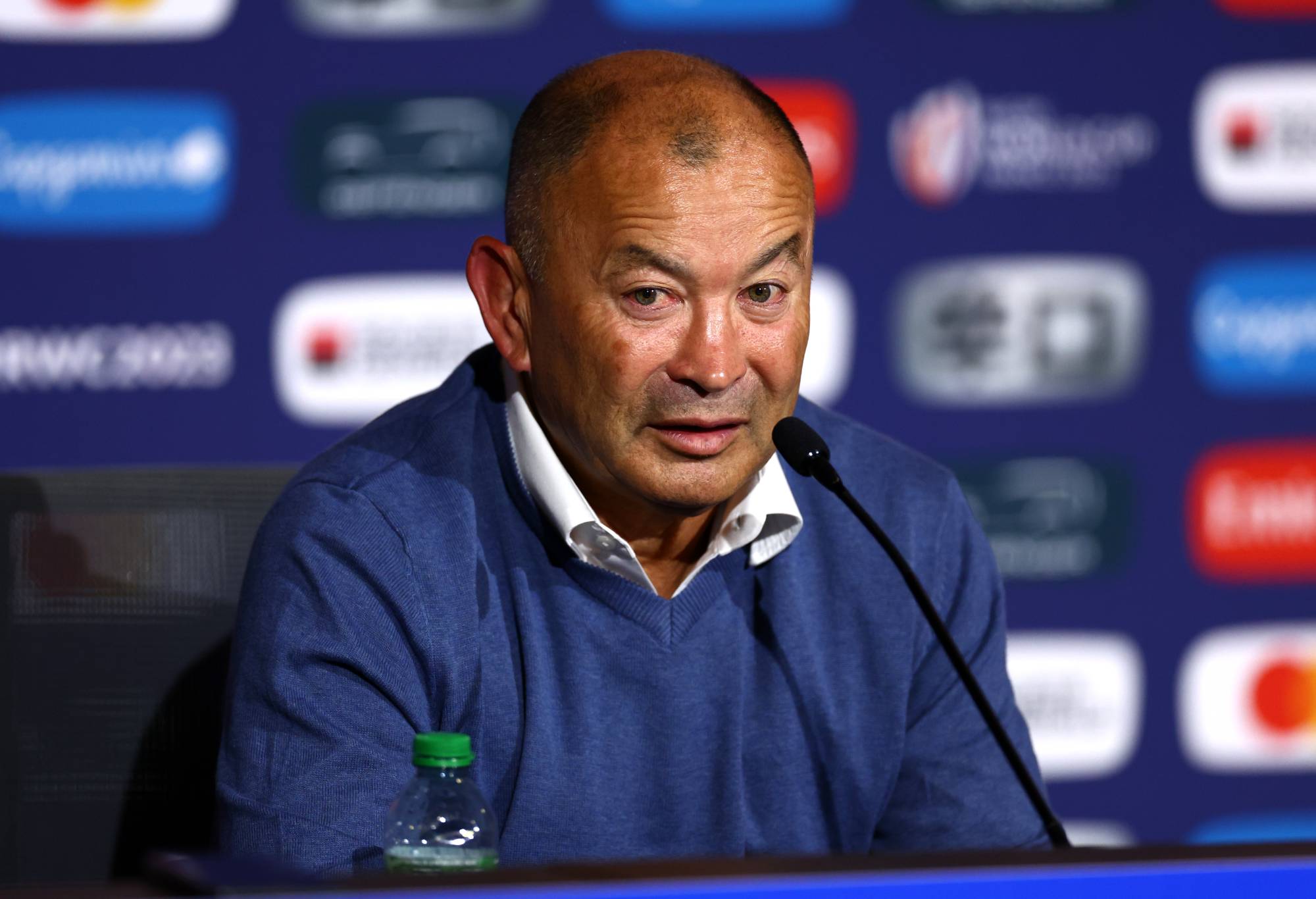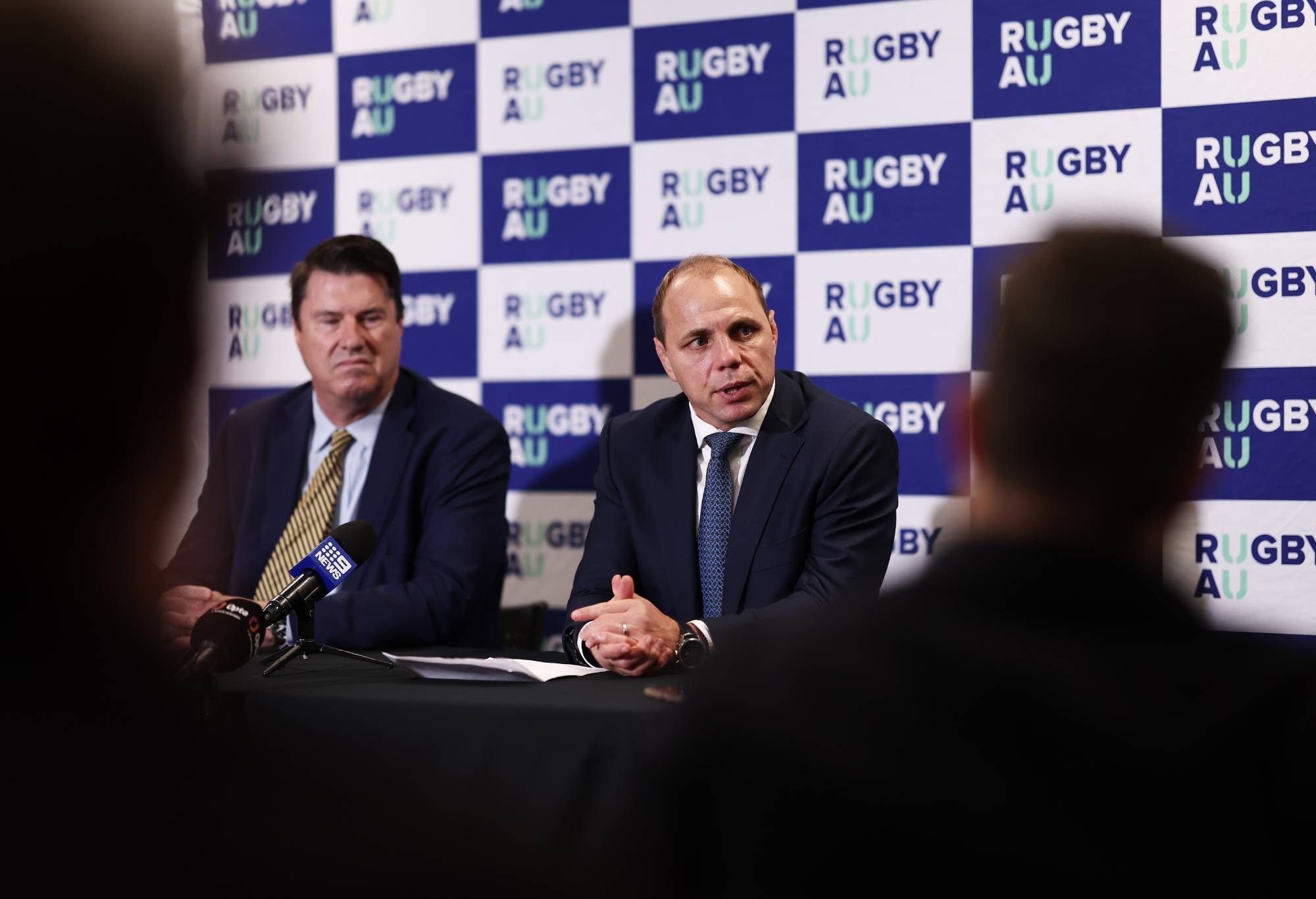Australia’s navel-gazing is well underway after an embarrassing 40-6 defeat to Wales, which leaves the Wallabies pondering an early exit from the Rugby Union World Cup for the first time in their history.
Naturally, it has lead to much soul-searching around the game’s purpose in Australia, and decline since the period in which they could have been considered among the finest exponents of the 15-a-side code.
It was particularly ironic for those with a memory of rugby union’s story to see them eliminated by successive defeats to Wales and Fiji respectively, two of the few nations in which rugby union could legitimately be called the sport of the masses, a title that the Australian game has never remotely sought to claim.
While the short-term bluster will focus on this group and their coach, Eddie Jones, the truth is that the sport has semi-deliberately sabotaged itself for over 20 years, dating back to the rush of enthusiasm around the 2003 World Cup, when Jones was last in charge.
Semi-deliberate is the appropriate term, because, despite words to the contrary, the sport has consciously maintained a pathways system designed to exclude the bulk of athletes and prioritise those with more cash.
In rugby union, being from a good family is still the most important thing. In rugby league, being good enough is. Until the link is broken with schools for the elite, this will continue to happen.
Jones is an obvious lightning rod for criticism, it is telling that his main strategy to prepare Australia to host the next edition of the World Cup is to loot players from the NRL.
It’s a smart plan. Rugby league has better technical rugby players of either code, better athletes, first pick of those athletes and first refusal on when they go. Moreover, rugby union has handed this advantage to them by its own attitudes.
As with everything in rugby union, it will inexorably come down to what school you went to. Three quarters of this squad attended fee-paying schools, and tellingly, that could be the same in the NRL but it’s totally irrelevant. Nobody is counting. They don’t list their schools on their Wikipedia pages.
Occasionally, sitting in Sydney Roosters press conferences, the thought arises that both Trent Robinson and James Tedesco are both graduates of St Gregory’s Campbelltown, but only in reference to how unimportant it is.
When thinking about Hamish McLennan and Phil Waugh, the dynamic duo atop Rugby Australia, the fact that both went to Shore School is in the top three things that anybody thinks about them. Two previous CEOs went there too, which is not something one can say about St Greg’s.

Eddie Jones. (Photo by Chris Hyde/Getty Images)
Australia is far from unique in this – Ireland are world number ones with a select from Dublin and Belfast’s expensive schools – but they are the only nation that has a legitimate contender in league and as long as rugby union prioritises private schools, it will never be able to compete for talent.
Jones himself knows this, having previously butted heads with the English RFU over their reliance on elite education to produce players.
In Australia, like the UK, the response is to put good athletes into the private school system rather than to figure out a way that stops rich kids from getting priority access to the sport.
Currently, all they are doing is giving young rugby league players better life chances. The NRL is full of players who get to go to rugby union’s posh schools, achieve an expensive education that they never otherwise would get, then go back to playing league anyway.
All the power in the world to them: those that don’t make it get a leg-up in a society that values what school you went to and they get access to elite facilities paid for by other people’s money.
Once they exit the schools, the financial disparity kicks in and they switch back to league immediately because of the greater rewards on offer, and not just for the best players.
Here’s the reality: rugby union can only offer 150 full-time jobs in the areas of Australia that care about rugby of either code, and can only offer $85,000 basic and around $150,000 on average.
There are at least 600 professional rugby league players in Australia, and as of the most recent NRL collective bargaining agreement, the entry level top 30 player is on $125,000, making the worst player on the roster better paid than half of a Super Rugby squad.
For the record: it’s even worse if you’re female, with the Wallaroos, the elite of the elite in women’s union, getting what the worst player on an NRLW roster gets. No wonder they’re swapping in droves.
The disparity in wages and talent pool is both self-created and self-limiting. Super Rugby can’t pay more because they haven’t got the cash, and they haven’t got the cash because they deliberately limited access to their sport for over a hundred years.
Much as McLennan likes to talk about the international opportunities on offer with the Wallabies, he’s pitching an argument based in 1993 rather than 2023.
Spoiler alert: players who get paid better can travel wherever they want on their holidays.
Noticeably, despite Australia’s C-suite currently drowning their sorrows in France to the point that it slowed the ASX, those NRL players not featuring in the finals are spread around Bali, Los Angeles and the Pacific Islands. The travel argument doesn’t work.

(Photo by Matt King/Getty Images for Rugby Australia)
It also speaks to the mentality of the organisation. The international opportunities are all there is, because there’s no point in Super Rugby. Nobody notices.
They’re all watching the Swans, who have taken the mantle of the preferred sport for the expensively educated Sydneysider.
Rugby union has the game back to front, with no ability to gain attention via their club game, which pales as a spectator experience compared to the NRL, and thus a reliance on international fixtures to pay the bills.
The public have voted with their feet, or more accurately, their eyeballs. Since Jones returned, the bulk of his headlines have been in the rugby league’s reflected glow.
The signing of Joseph Suaalii was trumpeted as a great get for the sport, but only served to remind the current cadre of rugby union internationals that there was cash out there, only they weren’t getting it, and to reinforce that rugby league could simply replace the winger with another elite athlete without any bother.
It was said that in the 1930s, if England needed a fast bowler, they could just whistle down the coalmine and another Harold Larwood would emerge. The NRL has roughly the same relationship with Western Sydney outside backs.
Since Suaalii’s signing, the likes of Jahream Bula and Sunia Turuva have emerged, with both on the shortlist for Rookie of the Year in this week’s Dally M Awards.

(Photo by Mark Kolbe/Getty Images)
They’re young, of Fijian descent and, first and foremost, supremely athletic. Had they been born on the island that their parents left, they would certainly have been rugby union players. There’ll be a shedload more where they came from, too.
With another World Cup to plan towards, Rugby Australia will doubtless now have to rethink their policies from top to bottom.
It’s existential now, with that tournament and the Lions Tour of 2025 the great white hope for the sport.
That tour has gone from being an opportunity to grab attention of sports fans across Australia to a potential nightmare, given that the Wallabies were just thrashed by Wales and will have to face the Welsh, plus everyone else from the UK and Ireland.
The strategy of walking across Driver Avenue to throw money at NRL players might be their only hope: currently, there are hundreds of excellent rugby athletes in Australia, but very few of them are playing union.
Given that Rugby Australia can’t fix its endemic structural issues in the next four years, asking the NRL to bail their pathways out might just be their best course of action.































































































